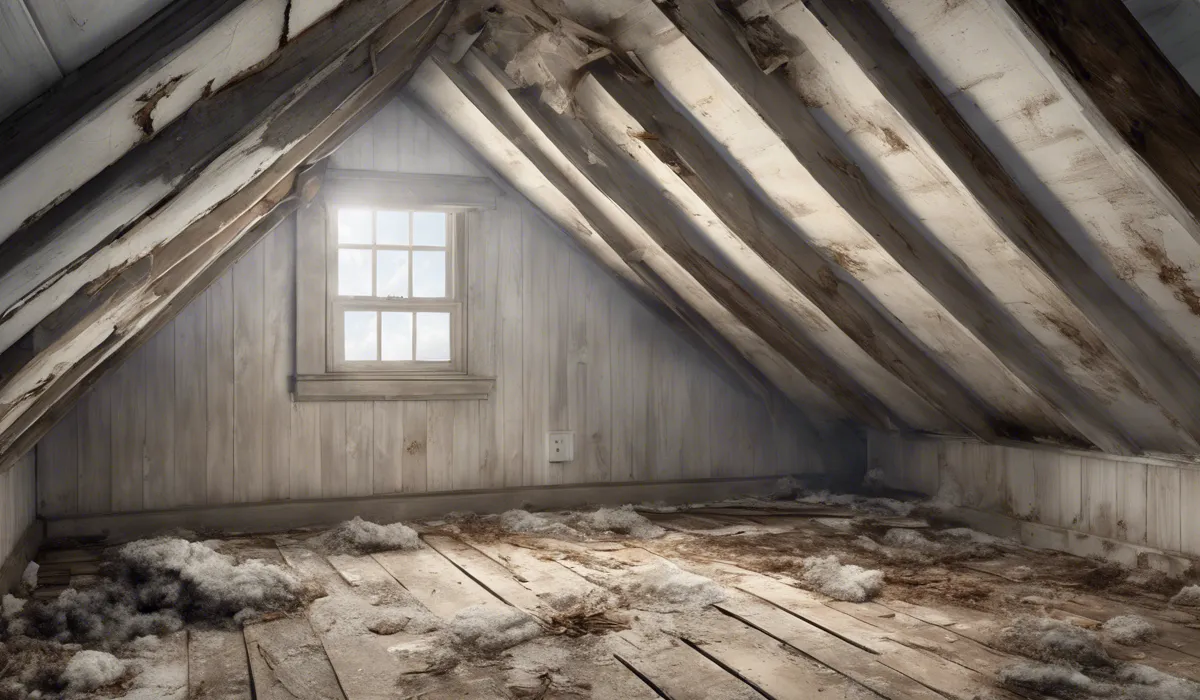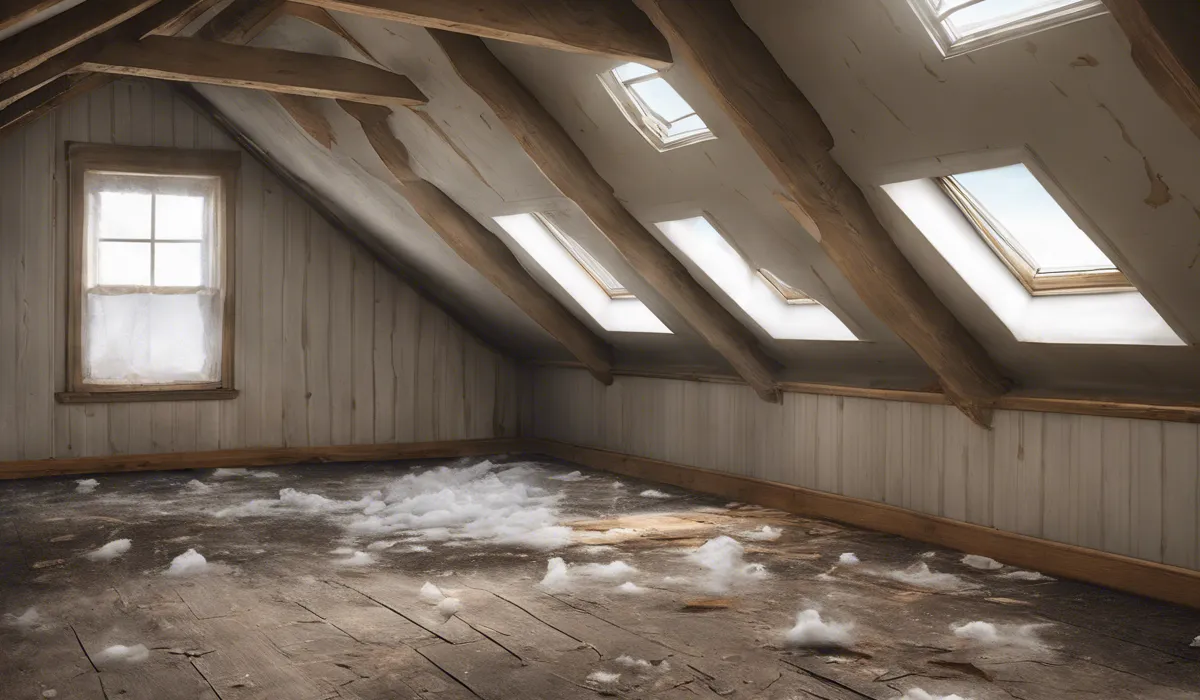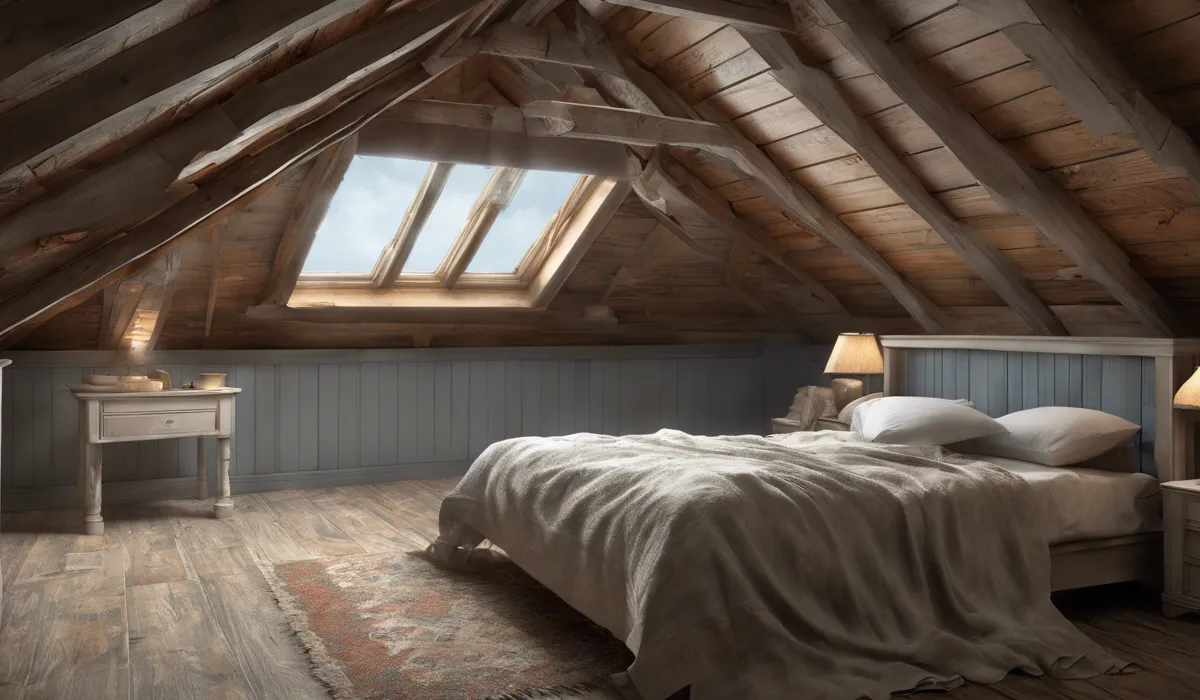To fix mold in the attic, identify and remedy moisture sources like leaks. Ensure proper ventilation and insulation. Clean affected areas with a mold-specific cleaner and wear protective gear. Consult a professional for extensive mold problems.
Identifying Mold in the Attic

Understanding Mold and Its Growth in Attics
Mold is a type of fungus that can grow both indoors and outdoors. It thrives in moist environments, which is why attics are often susceptible to mold growth.
Attics can have higher humidity levels due to poor ventilation or leaks from the roof, creating ideal conditions for mold to flourish.
Types of Mold Commonly Found in Attics
Several types of mold can be found in attics, including Aspergillus, Cladosporium, and the notorious Stachybotrys chartarum, commonly known as black mold. Each type poses different levels of risk to your home and health.
Recognizing the Signs of Mold
Indicators of mold in your attic include a musty smell, visible black or green spots on walls or ceilings, and water stains. If you notice any of these signs, it may be time to investigate further.
Detecting Mold with the Right Tools
Detection of mold can be done using moisture meters and infrared cameras. These tools help identify wet areas where mold is likely to grow.
You can also test the air quality to detect mold spores that are not visible to the naked eye.
Removing Mold from the Attic

Adhering to Safety Measures
Before attempting to remove mold, it is crucial to wear the right protective gear, including gloves, goggles, and a respirator to prevent inhalation of mold spores.
Ensure the space is well-ventilated during the cleaning process.
Home Mold Removal Techniques
For small areas of mold, you can use a mixture of water and detergent or a solution of water and vinegar.
Scrub the affected areas thoroughly and then dry them to prevent the mold from returning.
Deciding When to Call Professionals
If the affected area is large or if you are unsure about doing it yourself, it is best to call in professional mold removers. They have the expertise and equipment to handle extensive mold problems safely.
Step-by-Step Mold Cleaning Guide
To clean mold, start by wearing the appropriate gear. Then, isolate the area to prevent spores from spreading.
Use a cleaner specifically designed for mold, apply it to the affected areas, scrub thoroughly, and then dry completely.
Preventing Spore Dispersion
During cleanup, use plastic sheeting to seal off the work area and ensure that HVAC systems are turned off to prevent spores from circulating throughout the house.
Preventing Future Mold Growth in the Attic

Maximizing Attic Ventilation
Good attic ventilation is crucial to prevent moisture buildup. Ensure that soffit vents are unblocked and consider adding a ridge vent or attic fan for better airflow.
Ensuring Proper Insulation
Insulation helps maintain a consistent temperature in the attic, reducing the risk of condensation. Make sure insulation is correctly installed and without gaps.
Keeping the Roof and Gutters in Good Repair
Regularly inspect and maintain your roof and gutters to prevent leaks. Clean your gutters to prevent water from backing up and seeping into the attic.
Conducting Regular Attic Check-Ups
Inspect your attic periodically for any signs of mold or moisture and address issues promptly. This can include looking for roof leaks or checking for proper insulation and ventilation.
Using Mold-Inhibiting Products
When making repairs or improvements, choose materials and products that resist mold growth. For example, use mold-resistant drywall or paint additives that inhibit mold.
FAQs About Fixing Mold in Attic
How can I identify the source of moisture causing mold in my attic?
Check for roof leaks, inspect attic vents for blockages, and look for inadequate insulation that may cause condensation. Ensure all exhaust vents lead outside and not into the attic.
What are the best ways to ensure proper ventilation in my attic to prevent mold?
Install ridge and soffit vents to promote air circulation, use attic fans if necessary, and keep vents clear of insulation and other obstructions.
What type of cleaner should I use to remove mold in the attic?
Use a cleaner specifically designed for killing mold, such as a solution containing bleach, hydrogen peroxide, or a commercial mold remover following the manufacturer’s instructions.
What protective gear is necessary when cleaning mold in the attic?
Wear an N-95 respirator, gloves, goggles, and clothing that covers your skin to protect yourself from mold spores and cleaning agents.
When should I consult a professional to deal with attic mold?
If the mold covers a large area (typically over 10 square feet), if it’s caused by sewage or contaminated water, or if you have health concerns, consult a professional mold remediation service.
Final Thoughts
To effectively combat attic mold, locate and address any moisture sources, such as leaks. Ensure that the attic is well-ventilated and adequately insulated.
Use a mold-specific cleaner to meticulously clean the affected areas, and don protective gear while doing so. For extensive mold issues, it’s prudent to seek the expertise of a professional.
